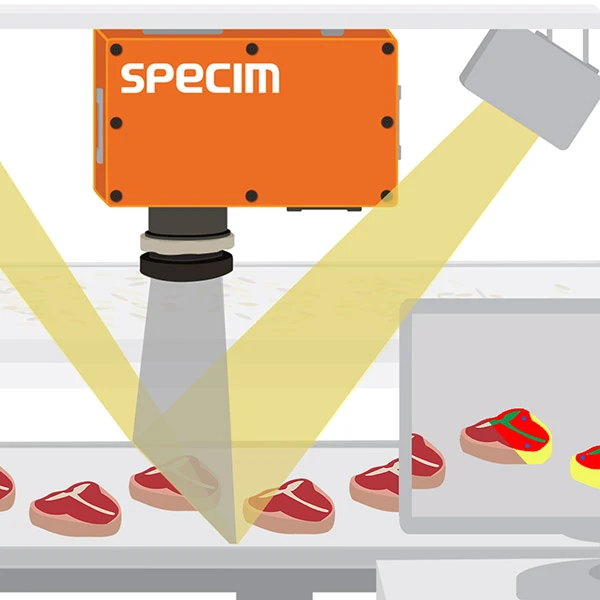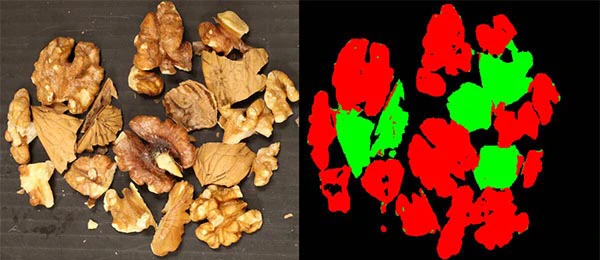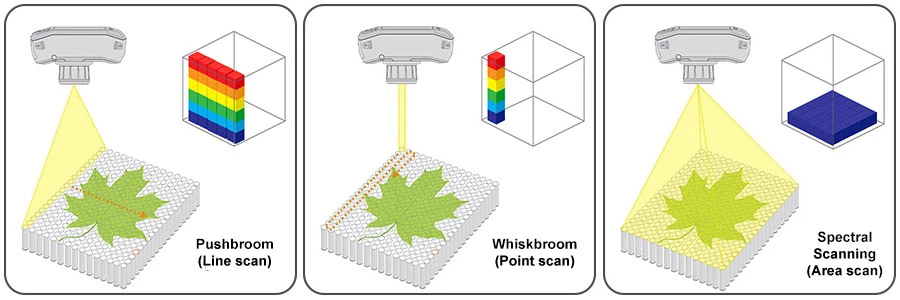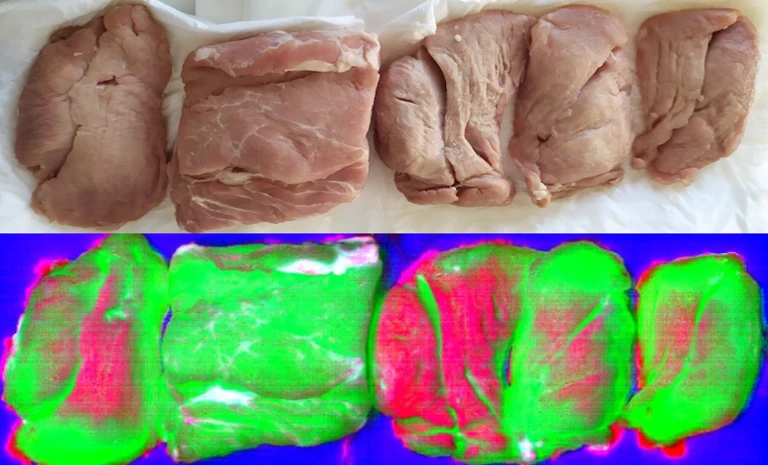Improving Food Quality Inspection with Hyperspectral Imaging

One of the main priorities for food manufacturers is to ensure the quality of their products. This involves inspecting the food at various stages of production to ensure they are free from contamination and adulteration or compliance with relevant laws, regulations, codes of practice, and international standards. There are several different methods that can be used to inspect food, including visual inspection, laboratory analysis, and machine vision.
Visual inspection is the conventional and most basic method when it comes to food quality inspection. Inspectors use visual cues like color, texture, and appearance to assess the quality and safety of food. Laboratory analysis is often used in conjunction with visual inspection to support or confirm the evaluation. Common laboratory tests include microbial testing, used to detect the presence of harmful microorganisms in food products, or chemical analysis to help determine the presence of hazardous chemicals in food products. However, such methods are tedious, laborious, time-consuming, and lack the objectiveness and speed for today’s high volume and high-speed food production.
Machine Vision For Food Inspection
With production throughput increased and quality tolerance tightened, many are turning to machine vision systems for quality inspection of food. Conventional machine vision systems are configured using RGB (red, green, and blue) cameras or sensors to characterize food based on its color. However, their identification capability is limited since they are only using three color bands. Considerable advances have been made in recent years in the development of new machine vision technologies for food quality inspection, with hyperspectral imaging (HSI) at the forefront. Unlike RGB cameras which use only three visible bands, hyperspectral cameras utilize hundreds of thousands of contiguous bands across the spectrum, not limiting to only the visible section. Hence, it can provide a large amount of detailed information which can be used to identify and sort foods based on their chemical composition rather than only colors. Every material has its unique composition and reacts differently over different wavelengths, i.e., the amount of light reflected, emitted, or transmitted. Hyperspectral cameras capture these reactions and use them as spectral signatures, like our fingerprints, for identification.

Distinguishing walnuts from their shells with hyperspectral imaging.
Image courtesy of SPECIM, SPECTRAL IMAGING LTD.
Hyperspectral Imaging Camera
There are various types of hyperspectral cameras, i.e., pushbroom (line scan), whiskbroom (point scan), spectral scanning (area scan), etc., and each has its own method of capturing hyperspectral data. Pushbroom hyperspectral cameras work by sweeping across the target, from one line of pixels to the next, to build up the hyperspectral datacube. Whiskbroom hyperspectral cameras capture one single pixel at a time. They build up the hyperspectral datacube through raster scanning the target. Hyperspectral cameras based on spectral scanning form their hyperspectral datacube by measuring one wavelength band at a time. As foods usually move along the production or processing lines, the pushbroom hyperspectral cameras are naturally suitable when it comes to inspecting moving foods.

Illustrative example of how pushbroom (left), whiskbroom (center), and spectral scanning (right) hyperspectral cameras capture hyperspectral data.
Specim Hyperspectral Cameras
Specim, a pioneer and leader in HSI technology, offers many pushbroom hyperspectral cameras that cover different spectral regions from VNIR (visible and near-infrared) to LWIR (long-wave infrared). These include handheld hyperspectral cameras, industrial hyperspectral cameras, airborne and remote sensing HSI systems, etc. When it comes to food quality inspection, the Specim FX series, notably the FX10 and FX17 hyperspectral cameras, offers high frame rates that can match the food processing or production line speeds of several meters per second, enabling accurate inspection in today’s high-speed food production. With 224 spectral bands and high spatial resolutions, the FX10, covering the VNIR spectral region, and the FX17, in the NIR (near-infrared) spectral region, can reliably identify food based on physical, biological, and chemical content, enabling easy inspection and grading of food, including detection of foreign objects and contaminants.
The Specim FX series hyperspectral cameras are used in many food inspection applications such as meat, nuts, fruits/vegetables, etc. Check out this video to find out more about the Specim FX series hyperspectral cameras.

Identifying different defects from the meat samples with Specim FX17 hyperspectral camera.
Image courtesy of SPECIM, SPECTRAL IMAGING LTD.
Need assistance finding the right hyperspectral cameras and solutions for your food application? Contact our specialists for a free consultation now.
